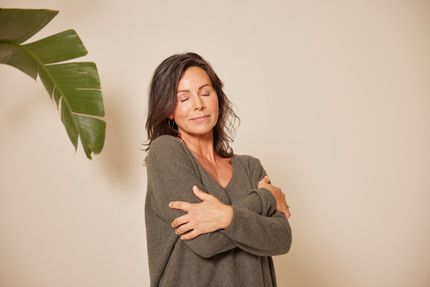

What are the first signs and symptoms of menopause?
As a woman, you know better than anyone what hormones can do to you. Cravings, a short fuse, lack of energy... These are all examples of hormonal issues that many women struggle with before their periods. It’s called PMS, premenstrual syndrome, and anyone who has a period is likely to have it. As menopause approaches, these hormonal symptoms can suddenly worsen or change. When does this start? What are the first signs of menopause?
The start of the menopausal transition
The first stage of menopause is called perimenopause. Peri comes from the Greek word for ‘around’ or ‘near’, so it literally means around your menopause. During this period, levels of oestrogen and progesterone in the body start to fluctuate and decline. Your ovaries gradually stop producing female sex hormones until you reach menopause: the day your periods stop completely.
Hormonal fluctuations are one of the reasons why many women get menopausal symptoms. The more your hormone levels fluctuate and drop, the more symptoms you’ll have and the stronger they will be. If the fluctuations are less dramatic, then your symptoms will be less intense.
When does perimenopause start?
The time of the onset of perimenopause and what symptoms you will have cannot be predicted. About 80 percent of menopausal women report having various menopausal symptoms to different degrees. Most women begin noticing the first signs around the age of 40. In general, you could say that most women aged 45 are in perimenopause. This stage lasts about five to seven years.
What are the first signs of perimenopause?
The first sign of perimenopause is typically a disruption of your usual menstrual cycle due to reduced functioning of the ovaries. For some women, period changes are the only symptom they get. But usually, perimenopause comes with a number of other symptoms. You may start to experience these symptoms even before you notice anything unusual about your menstrual cycle.
Other early signs include:
- Vasomotoric symptoms (such as hot flashes and night sweats)
- Mood swings
- Sleep problems
- Low sex drive
- Vaginal dryness
- Heavy periods
- Memory problems
- Concentration difficulties
- Breast tenderness
Why do you get symptoms?
It may be useful to know that menopausal symptoms are not only caused by declining levels of oestrogen and progesterone. Other factors, such as insulin resistance, stress or decreased thyroid function, can also contribute to your symptoms.
Diet and lifestyle, habits such as smoking, and your cultural or ethnic background can also play a role. For example, far fewer Japanese, Korean, and Southeast Asian women report having hot flashes. In fact, in Mexico's Yucatan peninsula, women appear not to have any at all.
How to alleviate early symptoms
What menopausal symptoms you might get and how severe they are can vary from one person to the next. Therefore, there is no one-size-fits-all approach to alleviating them. However, looking after your health and mental well-being can help with symptoms during perimenopause and menopause.
Your journey will be easier if you understand what is happening in your body during perimenopause. So, the first thing you can do is get to know your body. This will allow you to adjust your lifestyle one step at a time, depending on the symptoms that you're experiencing. For instance, you could make more time for relaxation, or cut back on alcohol and sugar.
What about contraception during perimenopause?
Many women, including perimenopausal women, use contraception to protect themselves against pregnancy. However, in addition to preventing pregnancy, the contraceptive pill also has other effects on the body. If you are taking the pill, your periods are happening because of the hormones (withdrawal bleeds) rather than due to your own menstrual cycle. Therefore, you may not notice any changes to your menstrual cycle that indicate that perimenopause has started. The contraceptive pill may also mask other symptoms of perimenopause.
This isn't necessarily a bad thing, but it's something you want to be aware of. In some cases, using another birth control method might be a better option. Whether you stay on the pill while transitioning through perimenopause depends on your personal situation and needs.
👉 Dr. Jael Loefstop explains: What to know about the contraceptive pill and menopause.
Sources
- Harvard Health Publishing. (2022). Perimenopause: Rocky road to menopause. https://www.health.harvard.edu/womens-health/perimenopause-rocky-road-to-menopause
- Pimenta F, Leal I, Maroco J, Ramos C. (2012). Menopausal symptoms: do life events predict severity of symptoms in peri- and post-menopause? PMID: 22607812.
- Monteleone P, Mascagni G, Giannini A, Genazzani AR, Simoncini T. (2018). Symptoms of menopause - global prevalence, physiology and implications. PMID: 29393299.
- North American Menopause Society. Menopause 101: A primer for the perimenopausal.
Possibly of interest to you











